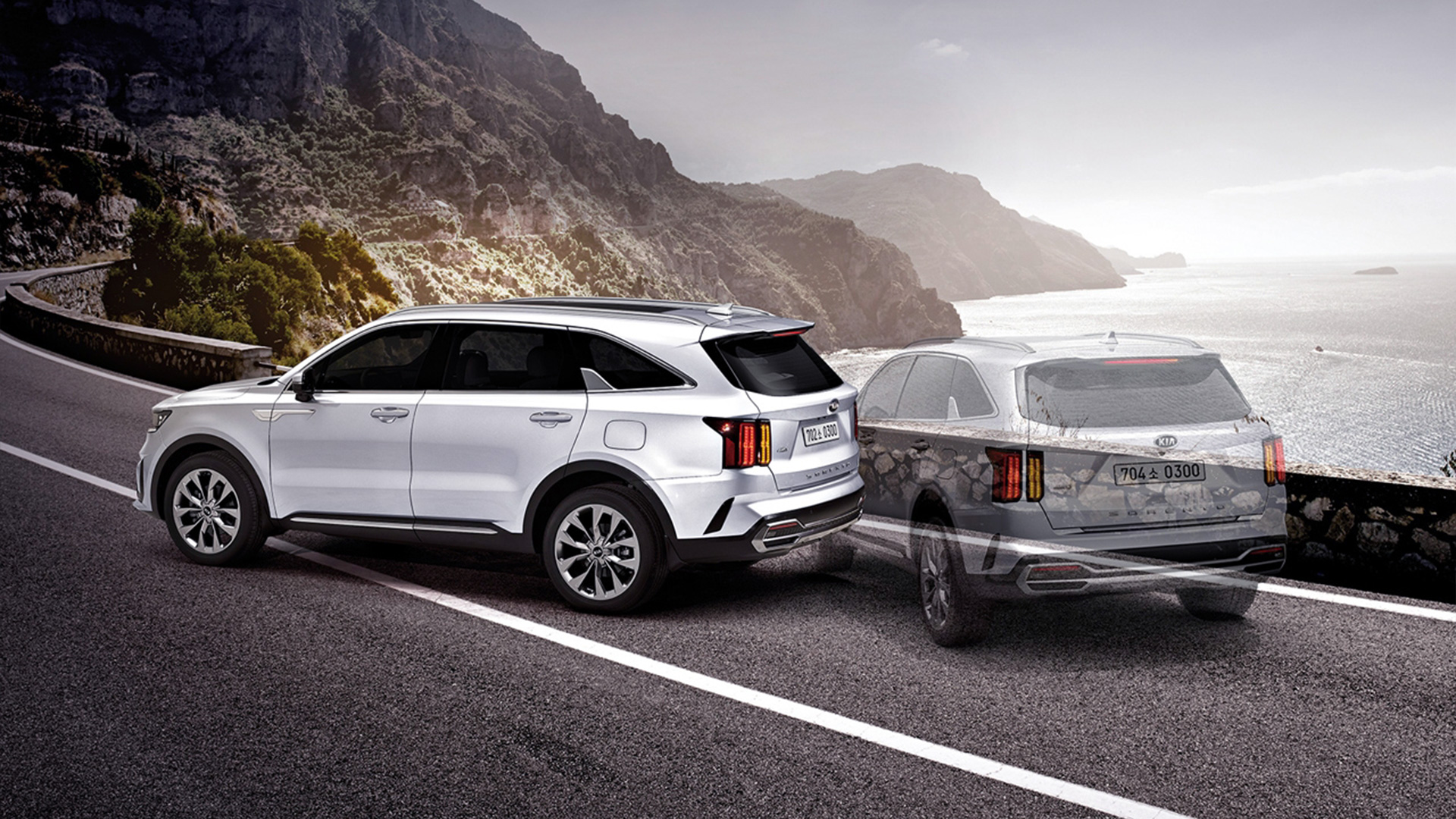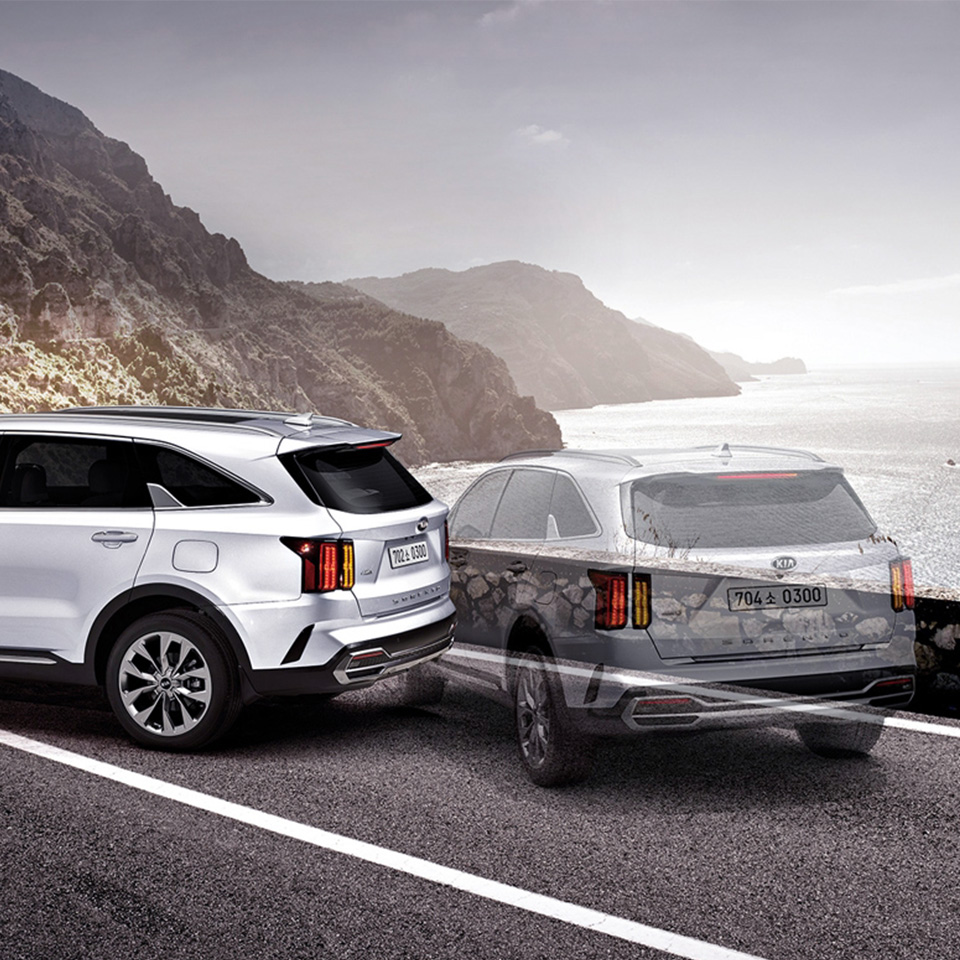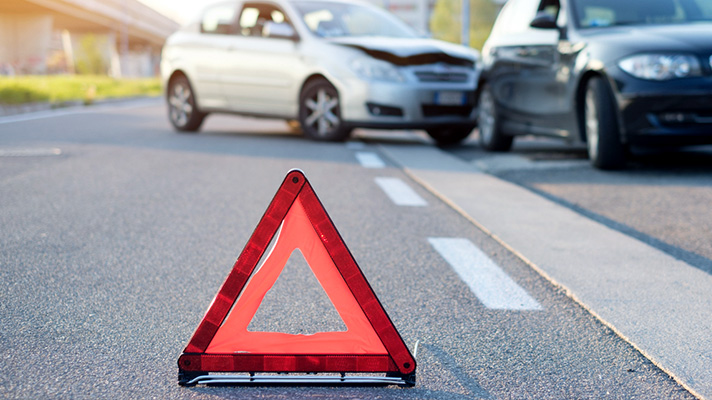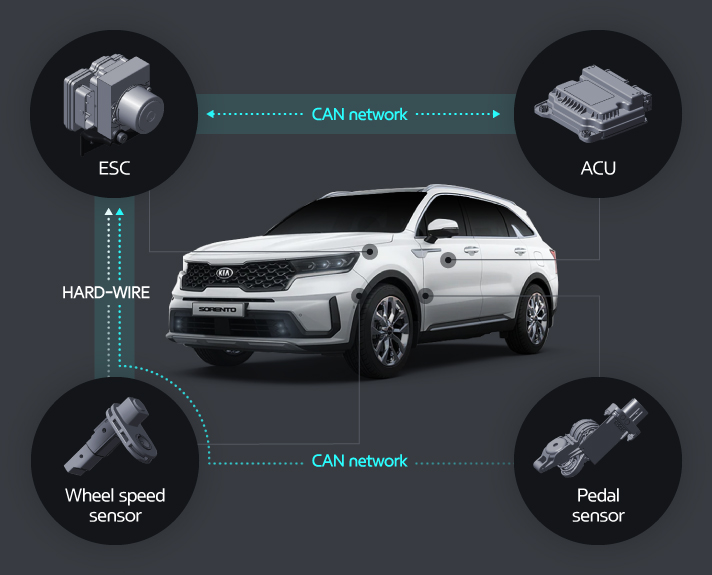



Recent releases of Hyundai and Kia cars come with the cutting-edge ADAS safety features designed to prevent accidents before they occur. Even when unavoidable accidents do occur, safety-minded technologies, such as the new and robust 3rd-generation platform, seek to reduce the extent of passenger injury. The Multi-Collision Brake (MCB) System, a new tech revealed by Hyundai and Kia this March that prevents secondary accidents, is an example of the brand’s continued innovation for the said purpose.
Existing safety features have focused on preventing/avoiding accidents or limiting the extent of damage from the initial crash. The MCB, on the other hand, focuses on the situation immediately after the first accident, expanding the range covered by the term “automotive safety.” Here we review the MCB system, now available in the 4th-gen Kia Sorento and the Genesis G80, focusing on its development backstory and operating principles.
Ordinarily, the driver loses control of his or her vehicle once an accident occurs. He or she may have lost consciousness; the car may have broken down, resisting driver control; external impact may veer the car in an unpredictable direction.
There are many, many variables that can endanger the passenger after the first accident; the high fatality rate in secondary accidents owes to the existence of many such variables. In a survey of highway accidents from 2013 to 2017 by the Korea Expressway Corporation, the fatality rate in secondary accidents amounted to 52.7%, over five times higher than the 9.1% recorded by ordinary accidents.
The grave danger of secondary accidents derives mostly from the fact that the direction of the car under an accident cannot be adequately predicted by the surrounding vehicles. Will it pass the centerline and endanger an oncoming car? Will it leave the road and crash into a parked car, guard rails, or roadside trees? Or perhaps even into an unsuspecting pedestrian?

When one Googles “preventing secondary accidents,” there is one common advice offered by nearly all experts: move the crashed cars into a safe location, install a warning triangle, and leave the scene before reporting the accident to the authorities. But this approach is limited in the sense that 1) the driver needs to be conscious and healthy enough to move, and 2) the car must be in a movable condition.
There must be a better way to limit the danger of secondary accidents. And indeed, many recent studies have found that applying forced automatic brakes on a car in a collision accident can effectively reduce the occurrence of secondary accidents: a paper titled “Safety Evaluation of Collision Mitigation Braking Systems,” published in the NHTSA(U.S. National Highway Traffic Safety Administration) journal, reveals that systems like MCB reduced secondary accidents by as much as 30%. Hyundai and Kia’s decision to develop and apply the MCB system to its vehicles stems from these theoretical backgrounds.
The MCB becomes active when a frontal/side collision results in the release of airbags. It then applies appropriate levels of brakes to the wheels to prevent secondary accidents. As the condition for its activity shows, the system will only turn on when a collision is severe enough to trigger the airbags.

The MCB system comprises several controllers and sensors that are triggered in sequence. First in line is the Airbag Control Unit (ACU), which senses a collision to release airbags. Then the wheel speed sensor and the Inertial Measurement Unit (IMU) measures the car’s current speed and movement, and checks for activity on the pedals to see if the driver intends to brake or accelerate manually. If the MCB judges that the driver is not pressing the pedal (or pressing with insufficient strength) after the release of airbags, the Electronic Stability Control (ESC) mechanism intervenes to apply brakes at an appropriate level that corresponds to the car’s current speed and movement. The car then comes to a halt, safe.

The amount of calculation required to make these judgments―in a fraction of a second at the moment of the accident―is absolutely vast. To handle this demand, the G80 and the 4th-gen Sorento comes with the 3rd-gen Controller Area Network (CAN), a communication network internal to the car that can handle up to 200 megabytes of data per second. Thanks to the CAN, the controllers and the sensors can sense the first collision, convey the data to the system, and have the ESC apply automatic brakes, all in time to prevent secondary accidents.
The braking force generated by the MCB reduces the vehicle speed by 5m/s (18km/h) per second, which is sufficient to minimize movement after the collision, bringing the vehicle to a halt at a relatively safe location.
For the MCB system to function well, there are certain prerequisites to be met. First, the vehicle speed cannot exceed 180km/h, as abrupt braking at high speeds can cause even bigger secondary collisions. Second, the system deactivates once it detects the driver hard-pressing the accelerator pedal, since the driver may be intending to accelerate to avoid further collisions. Finally, once the MCB brings the vehicle to a halt, it judges to have completed its mission and deactivates in two seconds, at which point manual control of the vehicle becomes necessary.

The MCB system’s effectiveness in preventing secondary accidents is acknowledged in Europe as well. The European New Car Assessment Program (EuroNCAP), for example, gives one additional point to cars with the MCB system in its adult passenger protection crash test index. Another study by a renowned European car manufacturer also found that a car with MCB showed an 8% decrease in fatalities and a 4% decrease in severe injuries compared to a car without MCB.
Beyond the G80 and the 4th-gen Sorento, the Hyundai Motor Group plans to install the MCB system to 16 other new model releases planned within the next year. The Group is also improving the existing MCB technology to prepare for situations of individual parts failure and to better consider the car’s direction of movement in applying the appropriate level of braking force. If the upgrades are successful, the new MCB will be able to more effectively prevent the grave danger of secondary accidents.
The MCB system is yet another proof of the Hyundai Motor Group’s philosophy to prioritize safety. The group’s continuing R&D efforts to secure passenger safety before, in, and even after the accident will, of course, mean that its consumers get to enjoy a safer driving experience than ever.